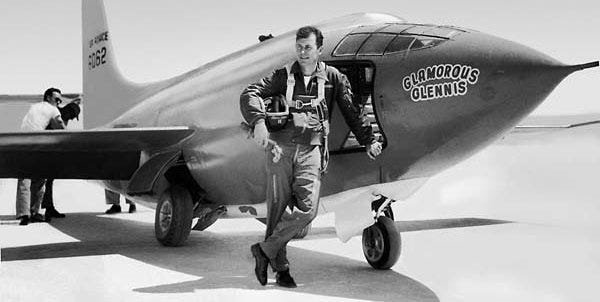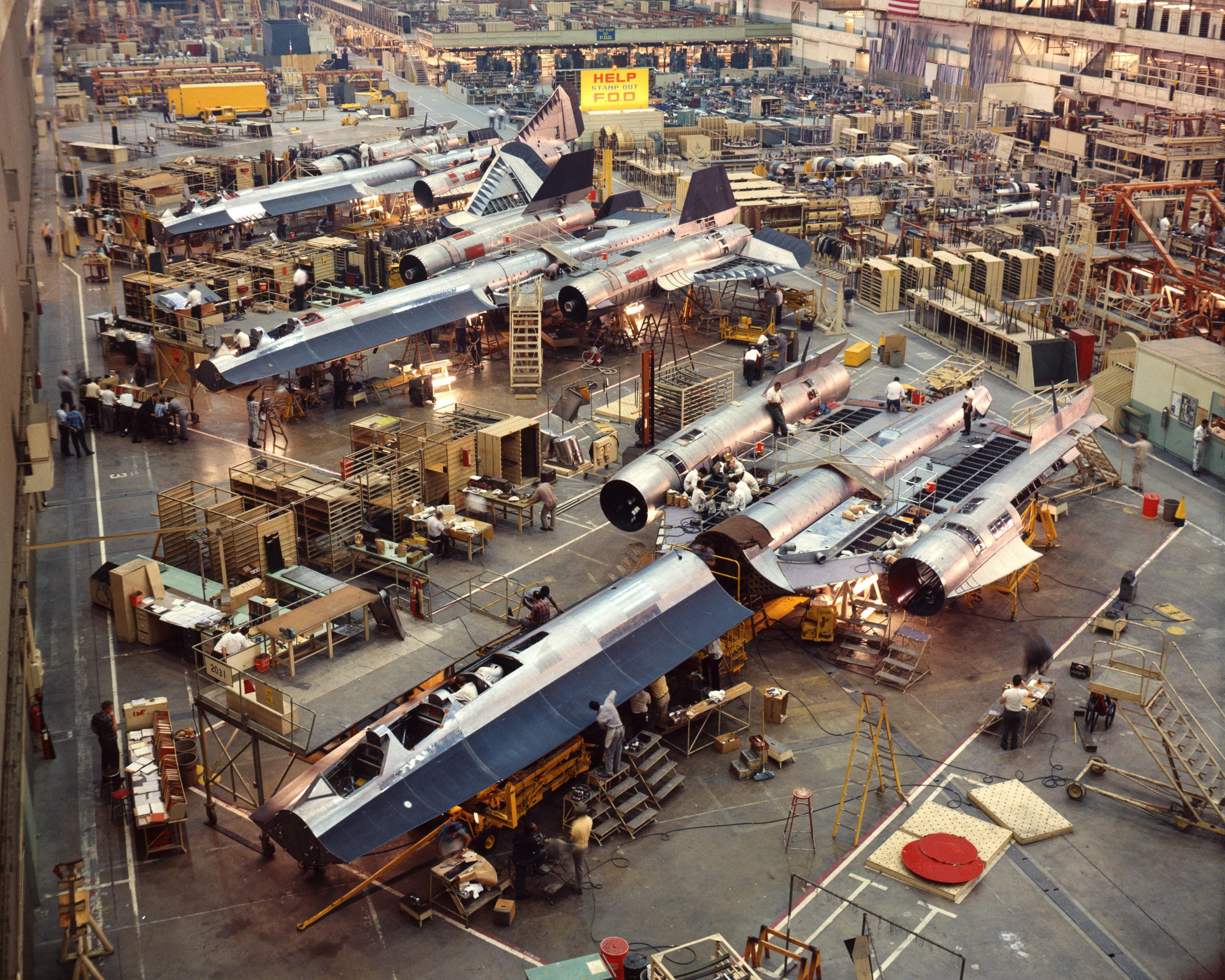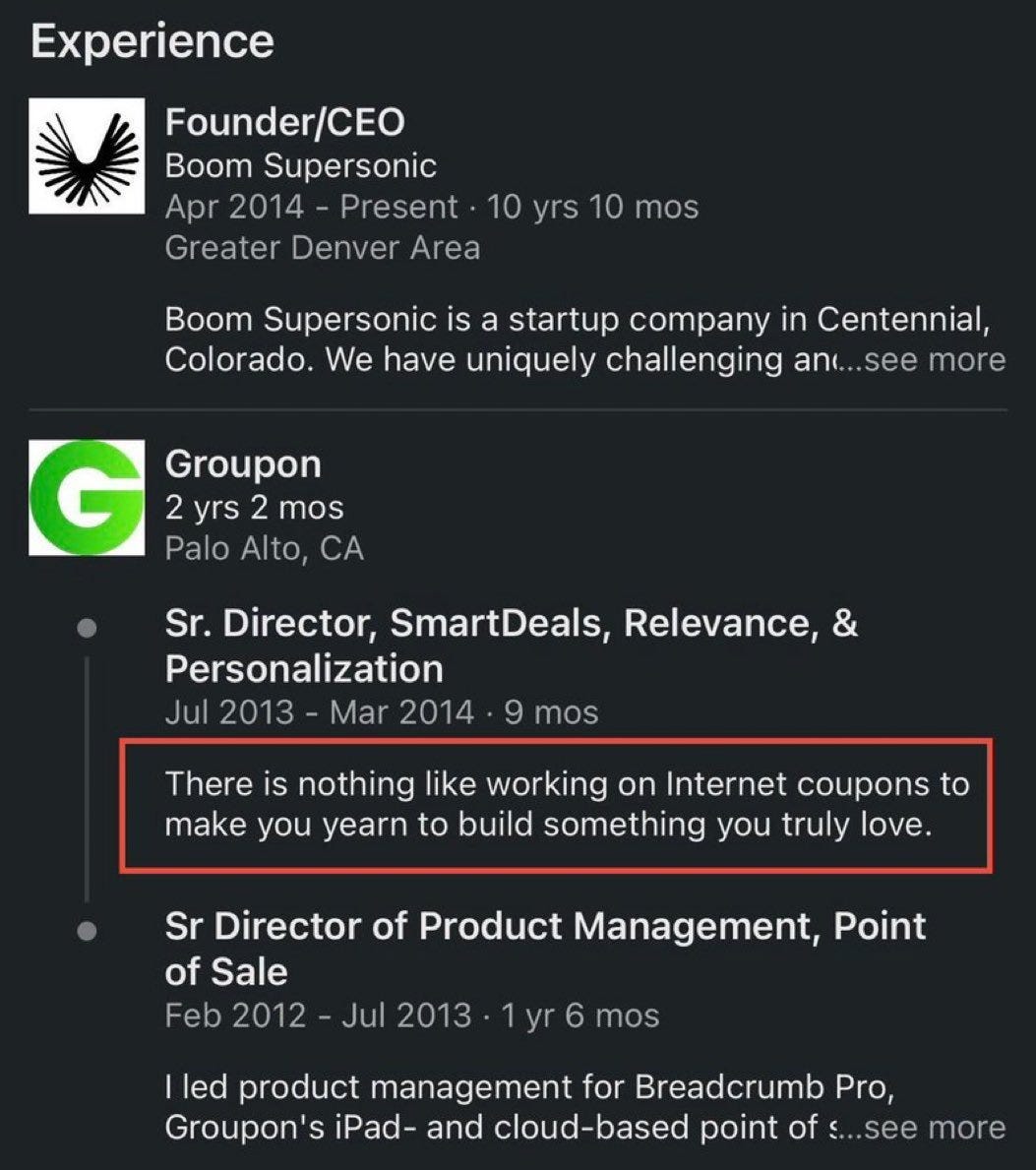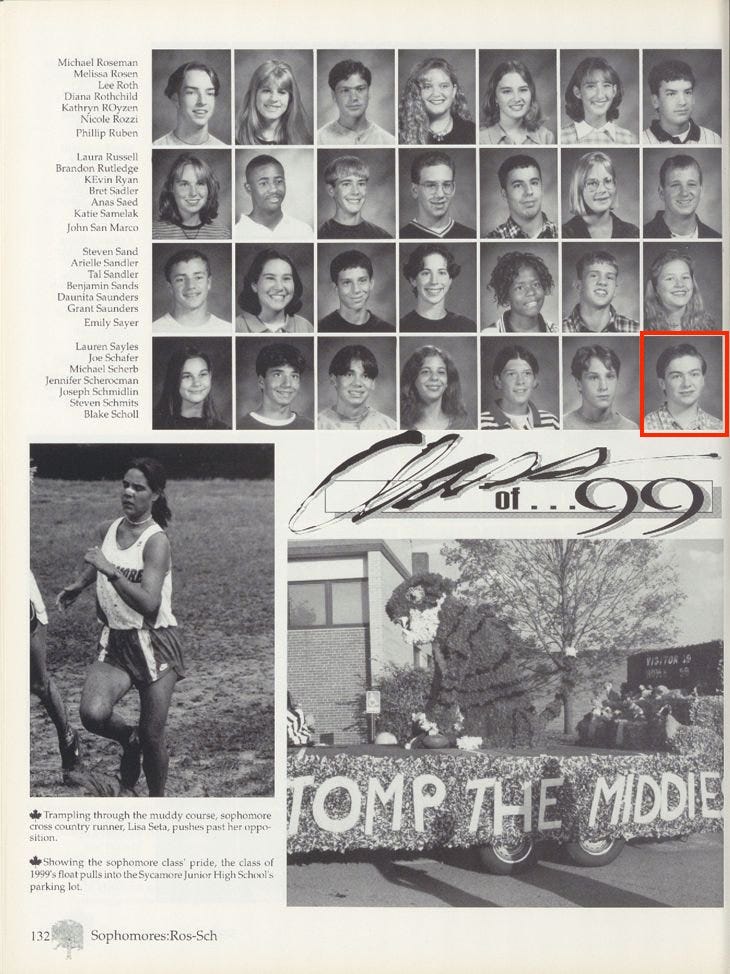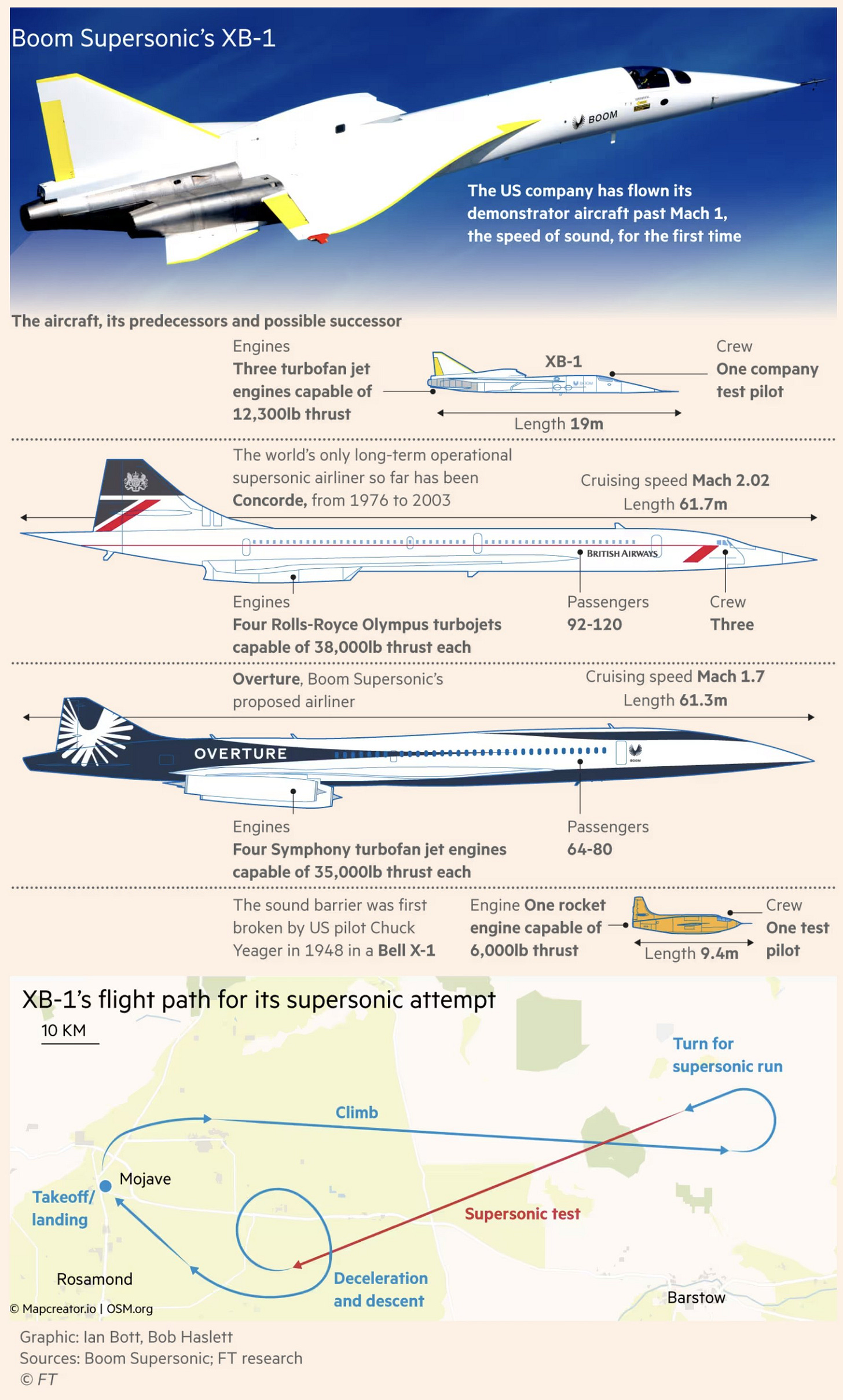Supersonic Dreams: Humanity's Race to Break the Sound Barrier Takes Flight Once Again
Supersonic history, Blake Scholl, and the "Boom" that inspired the world enabling a new renaissance in supersonic passenger flight
The Supersonic Dream: A Century in the Making
The Race to Break the Sound Barrier
It was a crisp October morning in 1947 when a bullet-shaped aircraft, the Bell X-1, rocketed across the sky above the Mojave Desert, its orange fuselage a streak against the heavens. Inside, Captain Chuck Yeager gritted his teeth, gripping the controls as the aircraft vibrated violently. And then, in an instant, the world changed. A deafening crack echoed through the atmosphere—the first sonic boom. Yeager had done it. Mankind had shattered the sound barrier at Mach 1.06, reaching a speed of 1,079 km/h (670 mph).
But this was only the beginning—Yeager’s triumph was a single step in a larger odyssey, one that would see engineers, industrialists, and visionaries striving to make supersonic flight a reality not just for test pilots, but for the world. The Germans had reportedly approached supersonic speeds with the Messerschmitt Me 262 in the final phase of World War II, but Yeager’s feat was the first confirmed level supersonic flight.
SR-71 Blackbird and the Cold War's Greatest Heist
By the early 1960s, the Cold War had escalated into a deadly game of espionage, and nowhere was the contest more fiercely waged than in the skies. When the Soviet Union shot down an American U-2 spy plane in 1960, the U.S. military realized it needed something faster—something that could outrun missiles, something nearly invisible to radar. Lockheed’s Skunk Works, led by the legendary Kelly Johnson, answered the call with the creation of the SR-71 Blackbird.
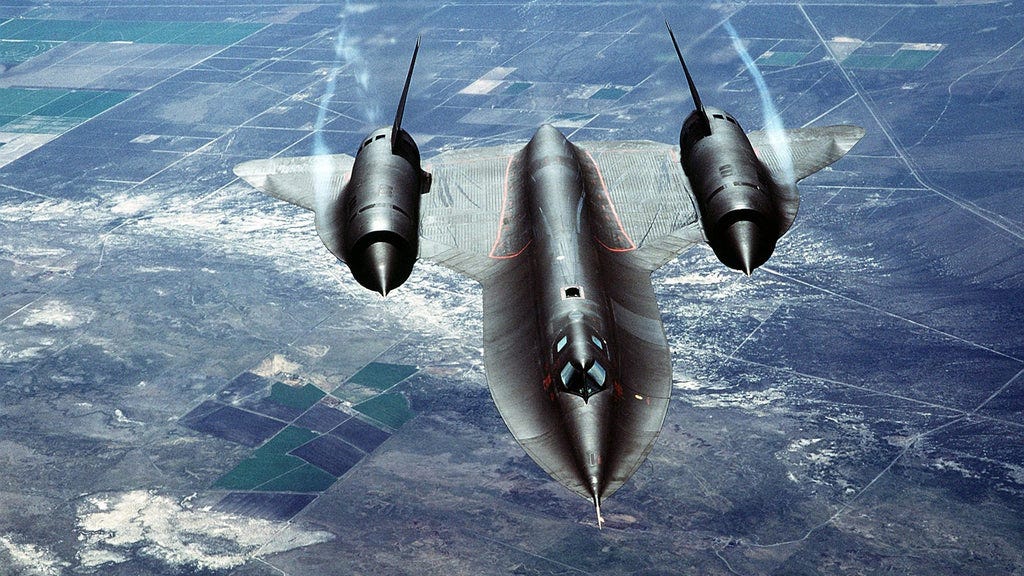
Kelly Johnson was an aviation legend. During World War II, Johnson designed the speedy P-38 Lightning, which pummeled destroyers and intercepted enemy fighters and bombers from Berlin to Tokyo; late in the war his team developed America’s first operational jet fighter, the P-80, in less than six months. Then he delivered the immortal Constellation, which revolutionized commercial aviation.
By 1955, Johnson and his secret division of engineers—dubbed Skunk Works—launched the world’s first dedicated spy plane, the U-2, just nine months after receiving an official contract. And perhaps Johnson’s greatest achievement, the SR-71 Blackbird.
Designed to fly at Mach 3.3 (2,200 mph) at an altitude of 85,000 feet, the Blackbird would be untouchable. But there was a problem: no known material could withstand the friction-induced heat generated by such speeds. Only one metal could handle the extreme temperatures—titanium. The problem? The largest reserves of titanium were in the Soviet Union.
Enter the CIA. In what could be described as the greatest industrial heist of the Cold War, the U.S. intelligence agency orchestrated a clandestine operation to obtain the critical metal. Using shell companies and third-party countries as intermediaries, the United States managed to purchase the very titanium it needed from its adversary without the Soviets realizing it. The same country that would scramble its Russian MiG-series fighter jets, to intercept the Blackbird unwittingly provided the materials that made it possible.
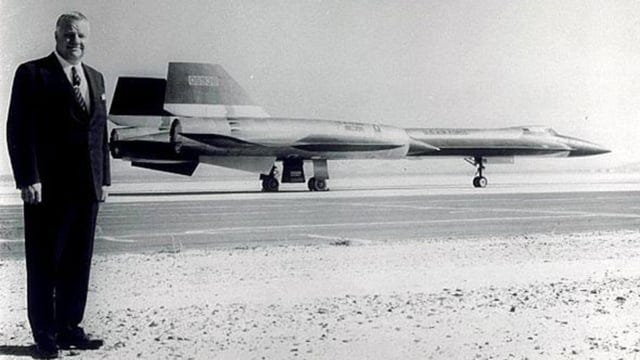
Building the SR-71 was an engineering odyssey. Conventional tools shattered the brittle titanium, forcing Lockheed engineers to create custom-made titanium tools just to build the aircraft. Even the fuel had to be redesigned—the Blackbird leaked fuel on the ground because its skin expanded under extreme heat in flight, sealing itself only when reaching full speed.
The result was an aircraft unlike any before it: a jet that could cross the continental United States in an hour, one that Soviet air defenses could only dream of intercepting. It was painted in a special black coating to dissipate heat, a decision that also earned it its famous name: the Blackbird. Even when missiles were fired at it—over 4,000 attempts were made—the Blackbird simply outran them.
On its retirement flight in 1990, an SR-71 flew from Los Angeles to Washington, D.C., in just 67 minutes, setting a record that still stands. It was a plane born of necessity, built in secrecy, and fueled—quite literally—by the very adversary it was meant to outpace. The Blackbird remains the fastest air-breathing manned aircraft in history, a legend of the skies and a testament to human ingenuity and Cold War cunning.
The Jet Age and the Dawn of Supersonic Flight
The Cold War saw a surge in supersonic aircraft development, fueled by military necessity and a growing ambition to conquer the skies. Various aircraft pushed the boundaries of speed, each contributing to the evolution of supersonic flight.
One of the first significant breakthroughs was the North American X-15, a rocket-powered aircraft that reached an astonishing Mach 6.7 (4,520 mph) in the 1960s. It was a stepping stone to both high-speed military aviation and spaceflight, piloted by some of NASA’s earliest astronauts, including Neil Armstrong. Meanwhile, the Soviet Union developed the MiG-25, a high-speed interceptor that could reach Mach 2.83, and later the MiG-31, one of the fastest combat aircraft in the world.
The Rise of Passenger Supersonic Flight: The Concorde
The development of commercial supersonic aviation was a monumental undertaking that required international collaboration, groundbreaking engineering, and visionary investment. The Concorde, one of the most iconic aircraft ever built, was the result of a Franco-British partnership between Aérospatiale of France and the British Aircraft Corporation (BAC). This collaboration was formalized in 1962 through a treaty signed by both nations, ensuring a shared commitment to developing the world's first supersonic passenger jet.
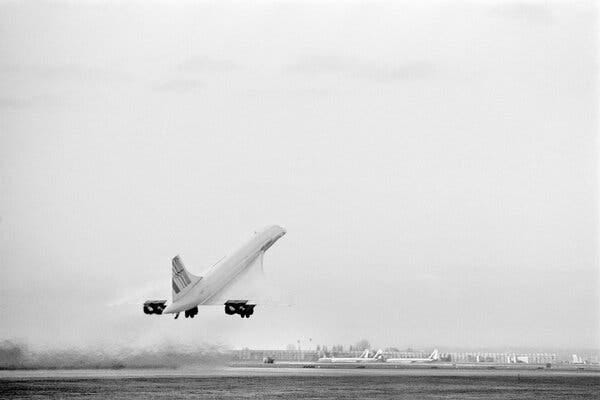
The development of commercial supersonic aviation was a monumental undertaking that required international collaboration, groundbreaking engineering, and visionary investment. The Concorde, one of the most iconic aircraft ever built, was the result of a Franco-British partnership between Aérospatiale of France and the British Aircraft Corporation (BAC). This collaboration was formalized in 1962 through a treaty signed by both nations, ensuring a shared commitment to developing the world's first supersonic passenger jet.
The project was spearheaded by some of the most brilliant aerospace minds of the era. Pierre Satre, the chief engineer at Sud Aviation (which later merged into Aérospatiale), played a crucial role in Concorde’s aerodynamic design. His expertise in delta-wing aircraft helped shape the jet’s distinctive form, optimizing it for high-speed, long-distance travel. Meanwhile, Sir George Edwards, managing director of BAC, brought a wealth of experience from designing previous commercial airliners. Together, these engineers and their teams worked relentlessly to overcome the daunting technical challenges of sustained supersonic flight.
Financial backing came largely from the British and French governments, which saw Concorde as both a technological showcase and a geopolitical statement of industrial prowess. However, private investors also played a role, particularly in funding research and early-stage development. Rolls-Royce and SNECMA, two of the world’s leading aerospace firms, developed the powerful Olympus 593 engines that propelled Concorde to speeds of Mach 2.04 (1,354 mph). Their groundbreaking advancements in jet propulsion and afterburner efficiency were critical to the aircraft's success.
The commercial launch of Concorde, however, faced a series of economic and regulatory hurdles. Although airlines such as British Airways and Air France became primary operators, initial interest from American carriers like Pan Am and TWA waned due to the high costs and growing environmental concerns surrounding sonic booms. Political factors also played a role, with the U.S. banning overland supersonic flights due to noise pollution concerns, limiting Concorde’s operational routes to transoceanic travel. Despite these challenges, Concorde carved out a niche as the pinnacle of luxury air travel, serving elite passengers until its retirement in 2003.
The 1950s and 60s saw the rise of the jet age, a time when speed was the ultimate currency of prestige and power. The Cold War fueled an arms race that extended to the skies, with the United States and the Soviet Union feverishly developing supersonic military aircraft. The North American X-15 blazed across the sky, piloted by daredevils like Neil Armstrong, reaching an astonishing Mach 6.7 (4,520 mph). The SR-71 Blackbird, a creation of Lockheed Martin’s secretive Skunk Works, became the fastest air-breathing aircraft ever built, reaching speeds of Mach 3.3 (2,200 mph) and flying reconnaissance missions at altitudes exceeding 80,000 feet.
But it wasn’t enough to go fast in war. The dream was to bring supersonic flight to the people—to build a passenger aircraft that could whisk travelers from New York to Paris in three hours. In the 1960s, two competing visions emerged. One was Concorde, a Franco-British marvel of engineering backed by the governments of Britain and France. The other was the Soviet-built Tupolev Tu-144, which achieved Mach 1.88 in 1968, narrowly beating Concorde’s 1969 maiden flight. Concorde, with its slender delta wings and ear-splitting afterburners, was an icon of luxury, a sky-bound chariot for the wealthy elite, cruising at Mach 2.04 (1,354 mph). But despite its breathtaking beauty and unmatched speed, it was doomed from the start. The 1973 oil crisis made fuel prices exorbitant, noise pollution from sonic booms led to operational restrictions, and a tragic crash in 2000 sealed its fate. The dream of supersonic passenger travel flickered, then died, with Concorde’s last commercial flight in 2003. Well at least for another decade until a software engineer whose last role was as a product manager from Groupon decided to do something about it.
The Lost Years and the Industrialists Who Wouldn’t Give Up
For two decades, supersonic aviation languished. The world settled for slower air travel, grounded by the belief that the economics of high-speed flight simply didn’t work. But in the shadows, a new generation of visionaries refused to accept this fate. Aerospace engineers, backed by audacious financiers and industrialists, quietly worked to resurrect the dream.
The Man Who Refused to Accept a Slower World: Blake Scholl’s Supersonic Dream and the Rise of Boom Supersonic
The dream of supersonic flight died on a cold October day in 2003, when Concorde—an engineering marvel decades ahead of its time—touched down for the last time at Heathrow. The jet age had once promised a world where speed would reign, where the tyranny of distance could be shattered in a single, roaring breath of turbine engines. Instead, air travel settled into an era of sluggish efficiency, as if the world had resigned itself to moving at the speed of the past.
Blake Scholl never accepted that.
Scholl, a former software engineer turned Groupon product manager, had no formal background in aerospace, no fleet of investors lined up, no blueprint beyond a lifelong obsession with flight and an unwavering belief that the future could be faster. But belief, history shows, is often the most dangerous ingredient in human progress.
Raised in Ohio—the birthplace of flight itself—Scholl spent his childhood glued to the sky, marveling at the contrails of jets slicing through the stratosphere. He flew as a hobbyist pilot, but his professional trajectory took him elsewhere: Carnegie Mellon, stints at Amazon, a high-flying career in tech. But beneath the algorithms and profit models, a deeper obsession lingered. If commercial airliners had barely improved in speed since the 1960s, wasn't something terribly wrong?
“I kept wondering, where’s supersonic?”
“For a decade, I had a Google alert set for ‘supersonic jet’ because I wanted to be the first to buy a ticket.”
— Blake Scholl
He realized that no one else was working to bring back supersonic travel—so he decided to do it himself.
The answer, he believed, lay not in nostalgia for Concorde but in a fundamental rethinking of how to make supersonic travel viable. The problem was cost. Concorde had been a masterpiece of design but a disaster in economics—a fuel-hungry, maintenance-heavy relic of an era when efficiency took a backseat to prestige. If supersonic was to return, it had to be reborn for the world of today.
So in 2014, with nothing more than a laptop and a conviction, Scholl started Boom Supersonic. He knew the idea sounded audacious, even foolish. The aerospace industry is a graveyard of overambitious startups. Boeing and Lockheed Martin had tried—and failed—to reintroduce supersonic commercial travel. Who was Blake Scholl to succeed where giants had collapsed?
His approach was deceptively simple: start small, learn fast, and prove incrementally that the impossible was merely undiscovered. Boom’s first aircraft, the XB-1—a scaled-down supersonic demonstrator—was born in a Denver warehouse with a small, hungry team of engineers willing to bet against the status quo. The skeptics came in droves. Aerospace veterans dismissed Boom as a vanity project, a fever dream from a tech entrepreneur who didn’t understand the crushing realities of fuel efficiency, regulatory bureaucracy, and the sheer brutality of aerospace manufacturing.
“This isn’t just about making a Concorde 2.0.
This is about making supersonic viable for the long term.”
With Boom’s manufacturing plant—dubbed the Superfactory—rising in Greensboro, North Carolina, and a planned launch of Overture by 2029, Scholl’s vision is coming to life. He believes that the reintroduction of supersonic travel will fundamentally reshape global mobility.
“Imagine a world where you can wake up in New York, have lunch in London, and be back home for dinner. That’s what we’re building.”
And yet, the momentum built. Scholl convinced investors. Backers like Sam Altman, Mike Moritz, Joe Lonsdale and other Silicon Valley heavyweights believed while the industry doubted. He signed $25B+ in pre-order deals with major Airlines—United, American and Japan Airlines—for Boom’s full-scale aircraft, Overture, the world’s first economically viable supersonic airliner. A decade after Scholl first envisioned a world where New York to London took three hours instead of seven, the dream was no longer theoretical. The engines had been chosen. The factory was built. Supersonic was coming back, this time not as a luxury reserved for the Concorde-era elite but as a practical, scalable solution to global connectivity.
XB-1 vs. Overture: The Road from Prototype to Market Viability

The XB-1, Boom’s first aircraft, was never meant to carry passengers—it was a proof of concept. A sleek, delta-winged demonstrator, it was designed to validate the technologies necessary for commercial supersonic flight: efficient aerodynamics, carbon-fiber composite materials, and advanced propulsion. The goal was to push the boundaries of what a smaller-scale supersonic jet could achieve, gathering the critical data needed for its commercial successor.
Overture, on the other hand, is built for scale. Designed to carry 65–80 passengers at Mach 1.7, it is optimized for both speed and economic feasibility. Unlike Concorde, which relied on afterburners that made it fuel-inefficient, Overture is engineered for sustainable supersonic travel. It will run on 100% sustainable aviation fuel (SAF), significantly reducing its carbon footprint while maintaining the promise of rapid intercontinental travel. And also in contrast to the Concorde, tts carbon-fiber composite construction makes it lighter and more efficient, and its non-afterburning turbofan engines eliminate the fuel-guzzling inefficiencies of its predecessor.
The shift from XB-1 to Overture represents the evolution from experimental technology to a commercially viable market entrant. If the XB-1 proves that supersonic flight can be achieved affordably, Overture will prove that it can be scaled for global demand. With airlines already lining up to place orders, Boom Supersonic is positioning itself not just as a pioneer but as the company that will make high-speed travel a reality for millions.
The road ahead is still steep. The ghosts of Concorde loom, and the challenges of noise pollution, emissions, and infrastructure remain formidable. But history has a way of bending toward those who refuse to accept its limitations. Blake Scholl was never supposed to be the one to resurrect supersonic flight. But then again, neither were the Wright brothers supposed to fly.
And yet, they did.
The Second Coming of Supersonic Flight
Today, the world stands at the precipice of a new era. Boom Supersonic, now backed by industry giants like Rolls-Royce and Northrop Grumman, has done what many deemed impossible. As the sun cast long shadows over the Mojave Desert, the Overture aircraft roared through the sky, its engines igniting a sonic boom that echoed across the barren landscape—a triumphant return of supersonic travel.
For the first time in decades, the barrier of sound has been shattered by a commercial prototype, not as a relic of the past, but as a harbinger of the future.
The engineers who once huddled over blueprints, the investors who placed their bets on speed, and the dreamers who refused to accept stagnation—all now stood witness to a new chapter in aviation.
For America, this moment marks the revival of its pioneering spirit, a declaration that the frontier of the sky still belongs to those who dare and is a reminder of the power of individual ambition and the spirit of capitalism. For aviation, it signals the rebirth of an industry that once seemed resigned to incremental progress. And for humanity, it rekindles an age-old promise—that the world will only get smaller, that the boundaries of time and space will continue to erode, and that tomorrow will always arrive faster than today.
The boom has returned. And this time, its looking like it’s here to stay.
Sources
Ben Thompson. An Interview with Boom Founder Blake Scholl About Building a Supersonic Airliner. Stratechery, [n.d.].
Tom Vanderbilt. Boom’s Supersonic Mission to Not Go Bust. WIRED, December 20, 2021.
"The Crazy Story of How Russia 'Helped' Build the SR-71 Blackbird." The National Interest, [n.d.].
"Fastest Plane in History: The Blackbird." Lockheed Martin, [n.d.].
"Lockheed SR-71 Blackbird." Smithsonian Institution, [n.d.].
Jeff Davis. The Past, Present, and Future of Supersonic Air Travel. Intergalactic Scribe, [n.d.].
"Boom’s Supersonic Jet Flies for the First Time." Boom Supersonic, [n.d.].
"Shaping the X-59 QueSST for Quiet Supersonic Flight." NASA & Lockheed Martin, [n.d.].
"See the Supersonic Passenger Planes That Will Connect Cities in One Hour." Business Insider, [n.d.].






